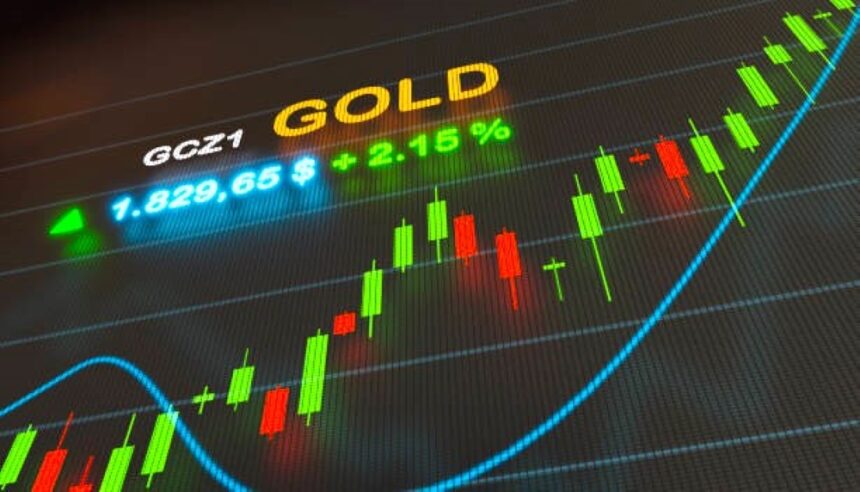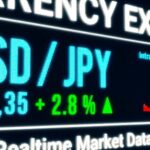Gold Prices Teeter Near $3,300 as Bears Dominate Market Mood.
Gold (XAUUSD) remains under pressure as it trades near daily lows around $3,300 in the early European session on Wednesday. After rallying sharply in recent weeks, the precious metal is facing a round of profit-taking and renewed bearish momentum. A combination of receding geopolitical anxieties, a firmer US Dollar, and anticipation surrounding high-impact US economic data is weighing heavily on the yellow metal.
For the second consecutive day, sellers have gained the upper hand as investor demand for safe-haven assets continues to fade. Despite some underlying uncertainty in global trade policy, the mood has marginally shifted toward risk-on, making gold less attractive in the short term. As the market braces for key US macroeconomic indicators, gold traders are positioning cautiously, with downside risks lingering.
US-China Trade Truce Hopes Undermine Safe-Haven Demand for Gold
One of the primary catalysts dragging gold lower this week is the apparent thaw in US-China trade tensions. On Tuesday, former US President Donald Trump signed an executive order granting automakers a two-year extension to meet domestic sourcing requirements for vehicle components. This move has been interpret by markets as a signal of flexibility in US trade enforcement, especially toward China.
Coupled with recent dialogue between Beijing and Washington that has not escalated into overt confrontation, market participants are growing optimistic about a potential de-escalation of the long-standing trade dispute. As trade-related uncertainties abate, investors are rotating out of safe-haven plays like gold and reallocating capital toward riskier assets such as equities and high-yield bonds.
Although Trump’s trade stances remain unpredictable, the latest policy shift has temporarily quelled fears of a near-term trade war re-escalation. This development has contributed significantly to the decline in gold prices as it reduces the urgency for geopolitical hedging.
Stronger US Dollar Adds Pressure on Gold, But Upside Capped by Fed Rate Cut Bets
The US Dollar has staged a modest comeback this week, buoyed by end-of-month flows and a slight improvement in risk sentiment. As the greenback gains ground, gold—which is denominated in dollars—becomes more expensive for foreign investors, thereby dampening demand. This inverse correlation continues to pressure gold prices near the $3,300 mark.
However, the Dollar’s upside remains limited due to the prevailing belief that the Federal Reserve is on track to initiate a rate-cutting cycle in the coming months. Market participants have increasingly priced in the likelihood of a dovish Fed response to signs of economic weakness, which in turn caps further gains for the USD and cushions gold from deeper declines.
As it stands, the tug-of-war between a temporarily stronger Dollar and looming Fed rate cuts is creating a choppy trading environment for gold, with no clear directional bias until more data becomes available.
Weak US Labor Data and Consumer Confidence Reinforce Dovish Fed Outlook
Support for a more dovish Fed policy path was strengthened by the disappointing labor and consumer sentiment data released on Tuesday. The US Job Openings and Labor Turnover Survey (JOLTS) showed a drop in job openings to 7.19 million in March, down from 7.48 million in February. This marks a continued trend of labor market softening, which could prompt the Fed to accelerate policy easing.
Adding to this dovish narrative, the Conference Board’s Consumer Confidence Index slumped to 86.0 in April—its lowest reading in nearly five years. The Present Situation Index fell to 133.5, while the Expectations Index dropped sharply to 54.4. These numbers suggest consumers are growing more pessimistic about both current conditions and the near-term economic outlook.
Such weak macroeconomic indicators reinforce market expectations that the Federal Reserve will opt for at least two rate cuts before the end of the year. Lower interest rates reduce the opportunity cost of holding non-yielding assets like gold, which should provide some underlying support to XAU/USD even as broader sentiment remains mixed.
Geopolitical Risks Persist: Ukraine Ceasefire Talks Fail to Extend Calm
While optimism over trade relations is weighing on gold, ongoing geopolitical tensions continue to offer partial support to the metal. Russia has rejected Ukraine’s request to extend President Vladimir Putin’s three-day ceasefire to a 30-day agreement. This setback in peace negotiations prolongs the conflict and maintains a level of global risk that could still trigger safe-haven flows.
Further complicating matters, the United States has reportedly warned that it will withdraw diplomatic efforts to mediate between Russia and Ukraine unless both sides demonstrate a tangible commitment to the peace process. This geopolitical impasse adds to market volatility and provides a potential backstop to gold’s downward movement.
Despite reduced attention in recent headlines, the Russia-Ukraine war remains a key risk factor for global stability. Any sudden escalation could quickly revive demand for gold, making it essential for traders to remain alert to developments on this front.
Upcoming US Economic Data in Focus: ADP, GDP, and PCE to Set the Tone
With the latest data pointing toward economic softening, investors are now focused on a series of high-impact US releases that could further influence the Fed’s policy path—and by extension, the trajectory of gold prices.
Later today, the ADP employment report will offer insights into private-sector job creation for April. This will be followed by the advance Q1 GDP report and the closely watched Personal Consumption Expenditure (PCE) Price Index. Each of these data points will help markets assess whether inflation is cooling and if the Fed has the room to cut rates as expected.
Furthermore, Friday’s Nonfarm Payrolls (NFP) report will likely be the week’s main event, with market reaction closely tied to the strength or weakness of job creation and wage growth. Softer-than-expected numbers could trigger a renewed rally in gold by reinforcing rate-cut expectations.
Until then, gold is expected to remain range-bound, oscillating between macro-driven headwinds and the supportive undertone of monetary easing hopes.
Outlook: Can Gold Hold Above $3,300 or Will Data-Driven Volatility Sink It Further?
Technically, gold is at a pivotal juncture. The $3,300 level is proving to be a key psychological and technical support area. A sustained break below this level could open the door for a deeper correction toward $3,280 and even $3,250 in the near term. However, if upcoming US data prints weak and fuels rate cut expectations, gold could regain lost ground and test resistance near $3,340 and $3,360.
From a broader perspective, the path of least resistance for gold appears sideways in the short term. Any breakout—upward or downward—will likely hinge on how the next wave of US macro data affects the Fed’s projected policy stance.
Until then, gold traders should remain cautious, favoring a data-driven strategy that adapts to evolving economic signals.









